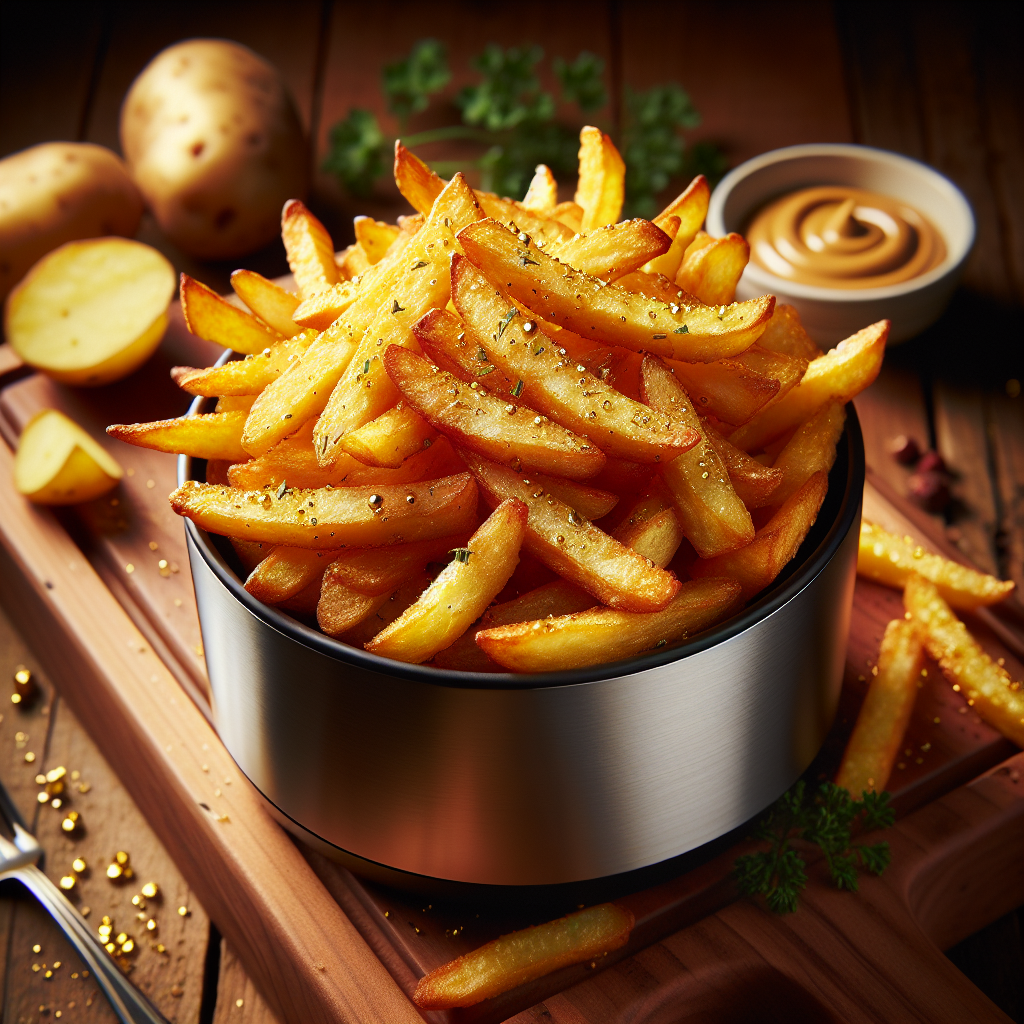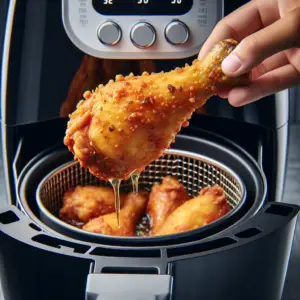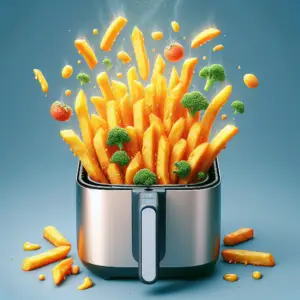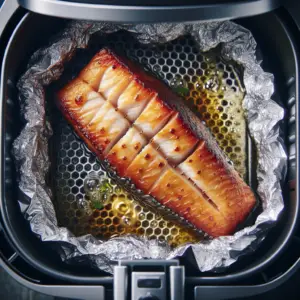In the quest for achieving perfectly crispy results in your air fryer, you may have found yourself pondering what exactly are the best practices. Well, fret no more, because this article is here to guide you towards mouthwatering success! Whether you’re a seasoned air fryer enthusiast or just starting out, we’ll share some handy tips and tricks that will elevate your culinary creations to a whole new level. From choosing the right temperature to selecting the perfect cooking time, get ready to unlock the secrets to crispy perfection in every bite.
Preheating the Air Fryer
Why is preheating important?
Preheating an air fryer is a crucial step in achieving crispy results. When you preheat the air fryer, it allows the cooking chamber to reach the desired temperature before you start cooking your food. This preheating process ensures that the food starts cooking at the right temperature immediately, resulting in better texture and crispiness.
How to preheat an air fryer
Preheating an air fryer is a simple and quick process. Start by turning on the air fryer and setting the temperature to the recommended preheating temperature, usually around 350°F (175°C). Allow the air fryer to run for approximately 3-5 minutes to reach the desired temperature. Some air fryers have preheating indicators or alarms to notify you when the preheating process is complete. Once the air fryer is preheated, you can proceed with adding your food and cooking it to perfection.
Recommended preheating time
The recommended preheating time may vary depending on the model and brand of your air fryer. Generally, preheating the air fryer for 3-5 minutes at the desired cooking temperature should be sufficient. However, it is always recommended to refer to the manufacturer’s instructions for specific guidelines on preheating times. Taking the time to preheat your air fryer properly will ensure that your food cooks evenly and achieves that desired crispy texture.
Choosing the Right Oil
Types of oils suitable for air frying
When it comes to choosing the oil for air frying, it is crucial to select one with a high smoke point. Oils with high smoke points are more stable at high temperatures, which is important for achieving crispy results. Some of the oils suitable for air frying include avocado oil, canola oil, peanut oil, and sunflower oil. These oils have smoke points that can withstand the high temperatures typically used in air frying, ensuring your food gets crispy without burning.
Avoiding oils with low smoke point
Using oils with low smoke points in your air fryer can lead to smoking, unpleasant odors, and even harmful compounds. Oils like extra virgin olive oil, flaxseed oil, and sesame oil have low smoke points, and they are best suited for drizzling or finishing your air-fried food after cooking. Avoid using these oils for cooking in the air fryer as they may not provide the desired crispy texture and can result in a less pleasant cooking experience.
Amount of oil to use
While it’s necessary to use some oil when air frying, it’s important not to overdo it. Using too much oil can lead to soggy and greasy results. A general guideline is to use about 1-2 tablespoons of oil per pound of food. This amount of oil is usually sufficient to achieve the desired crispiness without making your food overly greasy. However, for certain foods that naturally contain some fat, such as chicken wings or bacon, you may be able to get away with using no additional oil at all.
Using a Light Coating
Why a light coating is recommended
Applying a light coating on the food you’re about to air fry can help enhance its crispiness. A light coating acts as a protective layer that helps retain moisture and promotes even browning. It can also help in creating a delightful crunch on the exterior while keeping the inside tender and juicy. A light coating is particularly beneficial when air frying foods like chicken tenders, vegetables, or even homemade potato wedges.
Applying the coating evenly
To achieve the best results, it’s important to apply the coating evenly on your food. Start by tossing the food in a bowl with the coating mixture, ensuring that the mixture is well distributed. For foods like chicken tenders or vegetables, you can also use a brush to lightly coat the surfaces with the mixture. Remember, the goal is to achieve an even distribution of the coating without clumps or excess amounts, allowing for an optimal crispy texture when air frying.
Selecting the Right Temperature
Understanding the temperature range
The temperature setting plays a significant role in achieving crispy results in an air fryer. Most air fryers allow you to set the temperature within a range typically between 175°C (350°F) and 200°C (400°F). The higher the temperature, the crispier the results are likely to be. It’s important to consider the specific food you’re cooking and refer to recipes or guidelines for recommended temperature ranges. Experimenting with different temperatures will help you find the perfect balance between crispiness and tenderness for your favorite foods.
Effects of different temperatures on crispiness
The temperature you choose can significantly impact the final crispiness of your air-fried food. Higher temperatures will generally result in a crispier texture, producing a golden brown exterior. Lower temperatures may result in a less crispy texture, making it ideal for foods that require a more gentle cooking process. Keep in mind that different foods may have different optimal temperature ranges, so it’s important to consider the specific requirements of each dish when choosing the temperature for air frying.
Choosing the Correct Cooking Time
Factors influencing cooking time
Several factors can influence the cooking time in an air fryer. The size and thickness of the food, its moisture content, as well as the desired level of doneness, all play a role in determining the cooking time. Foods that are thicker or more substantial may require a longer cooking time to ensure thorough cooking and achieve the desired crispy texture. It’s important to pay attention to the specific recommendations for cooking times in recipes or guidelines to ensure that your food is cooked to perfection.
Using a food thermometer for accuracy
To achieve the best results and ensure food safety, using a food thermometer is highly recommended. While cooking times can provide a general guideline, using a food thermometer allows you to measure the internal temperature of the food accurately. This is particularly important when cooking meats or poultry, as you want to ensure they reach the appropriate internal temperature to be safely consumed. By using a food thermometer, you can achieve the desired crispiness while ensuring your food is cooked to perfection and safe to eat.
Shaking or Flipping the Food
Why shaking or flipping is necessary
Shaking or flipping the food during the cooking process is essential to ensure even cooking and achieve crispy results. When the food is shaken or flipped, it allows the hot air to circulate around all sides, preventing any areas from becoming soggy or undercooked. This technique promotes even browning and crispiness on all surfaces of the food, resulting in a more enjoyable eating experience.
When to shake or flip the food
The timing of when to shake or flip the food will depend on the specific recipe or food you’re air frying. It’s generally recommended to shake or flip the food around halfway through the cooking time. This ensures that both sides have an equal opportunity to crisp up and brown evenly. However, some recipes may require shaking or flipping at different intervals, so it’s important to follow the instructions or guidelines provided for the best results.
Arranging Food in a Single Layer
Reasons for not overcrowding the air fryer basket
It’s essential to avoid overcrowding the air fryer basket because it can hinder the airflow and lead to uneven cooking. When food is overcrowded, the hot air cannot circulate properly, resulting in areas of the food not getting crispy or receiving enough heat. By arranging the food in a single layer with enough space between each piece, the air can circulate freely, promoting even cooking and ensuring that each piece achieves the desired level of crispiness.
How to arrange food properly
To achieve the best results, arrange the food in a single layer inside the air fryer basket, leaving space between each piece. Avoid stacking or overcrowding, even if it means cooking in multiple batches. This way, the hot air can flow around the food and reach every surface, guaranteeing even cooking and crispy results. It may take a little extra time to cook multiple batches, but the end result will be worth the effort.
Using Parchment Paper or Cooking Spray
Benefits of using parchment paper or cooking spray
Using parchment paper or cooking spray in the air fryer can offer several benefits. Parchment paper acts as a non-stick surface, preventing food from sticking to the basket and making cleanup easier. It also helps in creating a crispy texture on the bottom of the food without the need for excessive oil. Cooking spray, on the other hand, helps in achieving an even browning and crispy crust while reducing the risk of food sticking to the basket.
Precautions and considerations
When using parchment paper in an air fryer, it’s important to choose one that is specifically marked as safe for air frying. Regular parchment paper may not be suitable for high-heat cooking, as it can burn or ignite. Additionally, when using cooking spray, it’s crucial to read the instructions and use it sparingly to prevent excess oil buildup. Be mindful of the type of coating on your air fryer basket as well, as some non-stick coatings may be damaged by cooking sprays.
Adding Moisture to Enhance Crispiness
Why adding moisture can improve crispiness
Adding moisture to the air fryer during the cooking process can help enhance the final crispiness of your food. The moisture from ingredients like marinades, sauces, or even a light spritz of water can create steam within the air fryer, aiding in the crisping process. This steam helps to create a delicate balance between moisture and crispness, resulting in a golden and satisfyingly crispy exterior on your favorite dishes.
Methods for adding moisture
There are several ways to introduce moisture into the air fryer. One method is to marinate the food before cooking. Marinades often contain ingredients like oil, vinegar, or soy sauce, which can contribute to both flavor and moisture. Another method is to add a small amount of liquid, such as water, chicken broth, or even wine, to the bottom of the air fryer basket. As the liquid evaporates, it creates steam within the cooking chamber, promoting crispiness. Additionally, lightly spritzing water over the food during the cooking process can also help introduce moisture and enhance crispiness.
Using Baking Powder or Cornstarch
How baking powder or cornstarch can contribute to crispiness
Baking powder or cornstarch can be used as a coating or ingredient to contribute to the crispiness of air-fried foods. When used as a coating, baking powder or cornstarch can help absorb excess moisture from the food’s surface, resulting in a drier exterior and a crispier texture. These ingredients create a light and airy coating that aids in browning and adds a delightful crunch to the cooked food. They can also be used as ingredients in batters or coatings to provide additional lift and crispiness.
Proper usage and precautions
When using baking powder or cornstarch, it’s important to use them in the appropriate amounts. Adding too much can result in an unpleasant taste or texture. A general guideline is to use about 1-2 tablespoons of baking powder or cornstarch per cup of flour or coating mixture. It’s also important to evenly distribute the baking powder or cornstarch when coating the food to ensure consistent crispiness. Experimentation with different ratios and methods will help you find the perfect balance to achieve the desired level of crispiness in your air-fried creations.
By following these best practices, you can elevate your air frying experience and achieve deliciously crispy results every time. Preheating the air fryer, choosing the right oil, using a light coating, selecting the correct temperature, and cooking time, along with shaking or flipping the food, arranging it in a single layer, using parchment paper or cooking spray, adding moisture, and incorporating baking powder or cornstarch can all contribute to achieving that perfect level of crispiness. So, get your air fryer ready, experiment with these techniques, and enjoy crispy and flavorful dishes that are sure to impress. Happy air frying!



